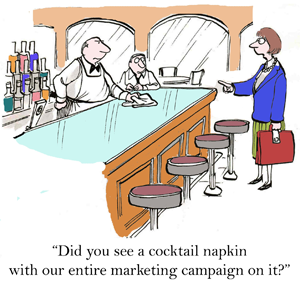 For decades, B2B marketing has been very campaign focused.
For decades, B2B marketing has been very campaign focused.
A company would do a few campaigns a year, and each campaign's purpose was to drive demand for the company's products or services for a period of time.
Many B2B organisations would engage with a marketing agency on a project-by-project basis, and budget for a campaign or two each quarter. And it worked.
Is this still the best way to manage a B2B company's marketing, though? Or has the game changed?
The Problem With B2B Marketing Campaigns
There are a number of issues with the campaign model that have arisen as the internet has become a more important part of the buying process. B2B buyers don't want to speak to sales people early in the buying process when they are exploring the options available to them and identifying whether they have a problem or not. Instead, they are making Google searches, and engaging with brands via social channels.
81% of B2B buyers start the buying process with a web search, according to a DemandGen Report.
This means that traditional campaigns are appearing in the wrong places, and don't reflect on the rapid change in the way people and organisations buy. Modern B2B marketing needs to be focused around being there to answer peoples questions when they make Google searches, or reach out to their social networks. The nature of these channels is that they require consistent, ongoing effort.
The Ongoing Iteratative Approach
Rather than taking a campaign-by-campaign approach, take an ongoing iterative approach to marketing that is geared towards meeting your growth targets. With search visibility being so important, B2B companies need to be regularly producing educational content, the content most likely to rise to the top of search results. To be successful, this content needs to be created consistently, and strategically.
Not just for a few months, or a couple of quarters, but all the time. The more quality content your organisation can create and publish, quite simply, the more traffic you will drive. Take a look at what can be done after just a few months of regular blogging here. Imagine what cumulative impact that will have on our website traffic over years.
It's not just about website traffic either, but lead generation. Reports frequently show that more content means more leads. Blog posts, whitepapers, eGuides, reports, infographics, videos, quizzes, ... the list of content you can produce is endless. But the more great content you can put out there, the more interest in your brand you will drive, the more leads you will capture and the faster you will grow.
You can then review the performance of that content production every few months, and tailor your ongoing strategy to focus on repeating successes, and eliminating failures. Try one or two new things every quarter, and integrate what works into your ongoing approach. Build a base of recurring activity that both produces and distributes that great content across the web, and you will reap the rewards.
Now, I'm not saying to go out tomorrow, cancel all your marketing campaigns and start haphazardly creating content. Instead, think about hiring an inbound marketing agency or building an internal inbound marketing team to develop a strategy that's appropriate for your business, in addition to running your existing campaigns. Measure its performance over a couple of years using a tool like HubSpot, and witness for yourself the huge opportunity available to businesses that adapt to the way people and organisations now buy.




